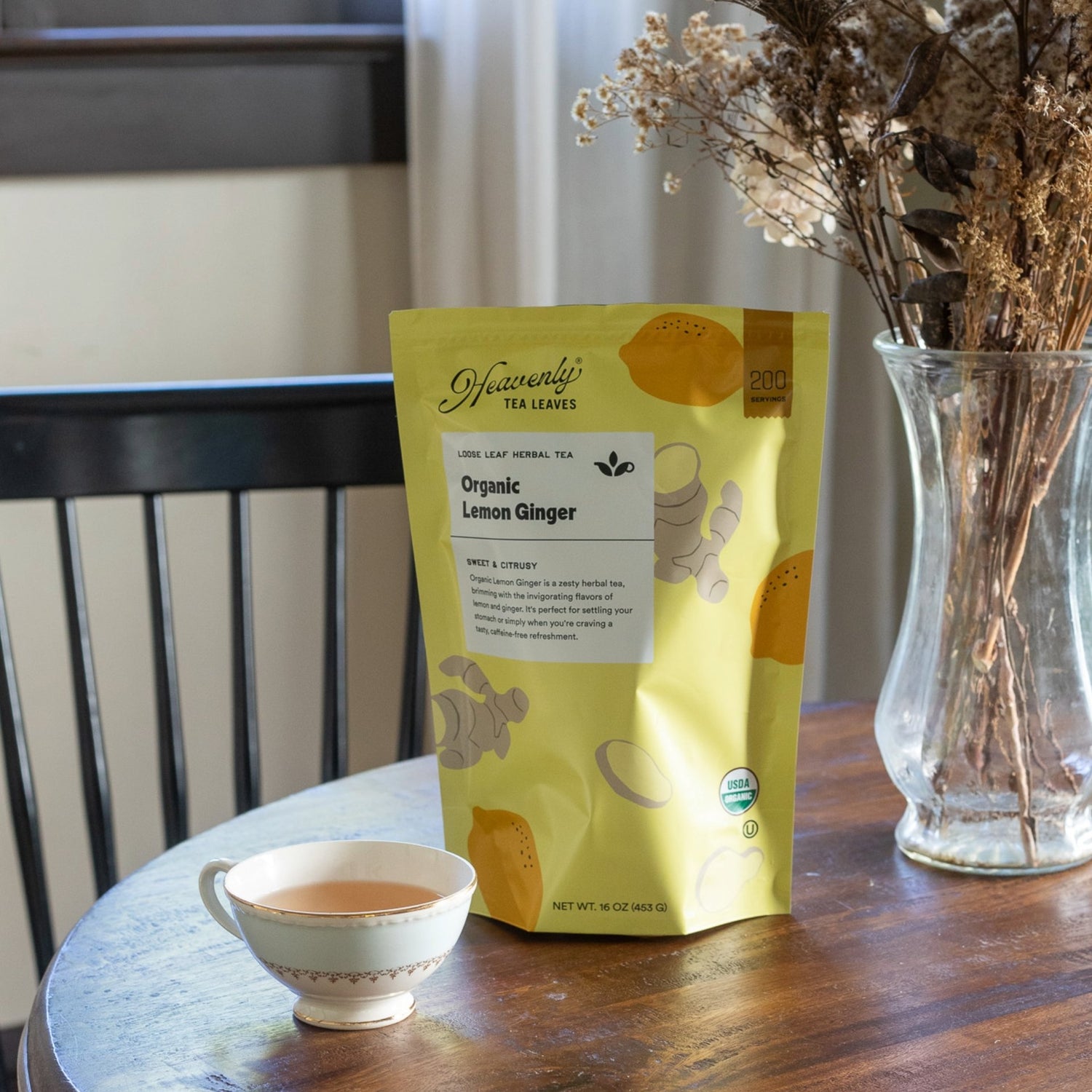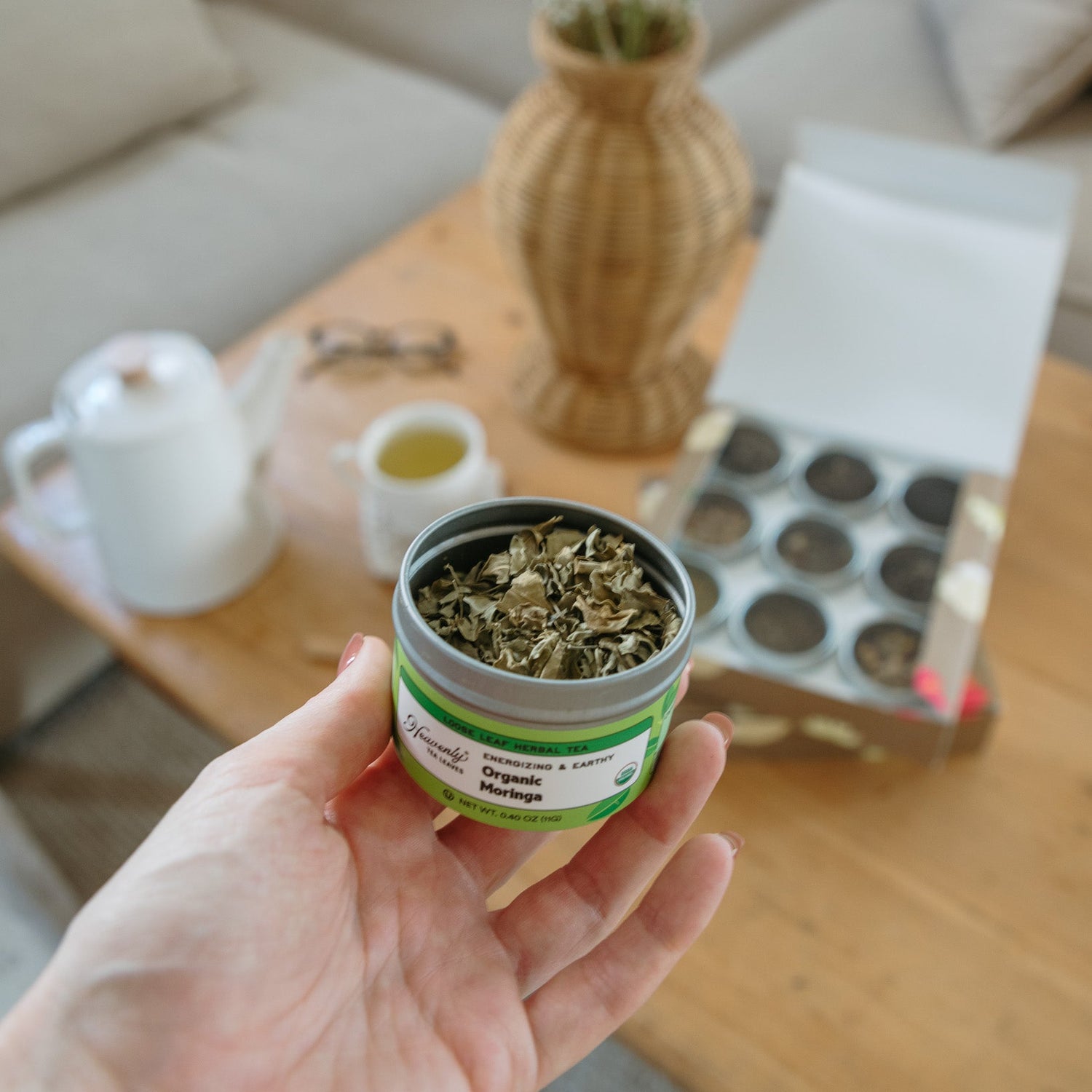Your cart is empty
Shop Best Sellers
Bestselling Teas
Discover the beloved favorites of Heavenly Tea Leaves—our top-selling blends that customers...

Discover the beloved favorites of Heavenly Tea Leaves—our top-selling blends that customers...
$0.00 USD

Since its tantalizing taste and healthful benefits were first discovered nearly 5,000 years ago, tea has taken on a life of its own. More than just a beverage, distinct cultural traditions have developed around its preparation, presentation, and consumption in every part of the world. Here are a few of the better-known global tea traditions.
Better with Butter in Tibet
Tibet is home to a tea tradition like no other. Butter tea, or Po cha, is a potent concoction that keeps you warm, cleanses the body, and serves as a centerpiece for time with family, friends, and even total strangers. To prepare this unique beverage, pu-erh teacakes are crumbled into hot water and boiled for several hours to create a strong brew called chaku, which is stored, then blended with salt and yak butter in a wooden churn called a chandong. While beloved by Tibetans, the bitter brew is often baffling to foreign palates. Good etiquette dictates that a drinker’s cup should never be empty, so a polite host will refill it throughout the drinking session.
Butter tea is beneficial in high-altitude regions because its high caloric content supplies energy the body needs to function in cold, oxygen-poor environments. Believed to improve mental focus, aid digestion, and support healthy cardiovascular function, it is consumed throughout the Himalayas for its health benefits. While outsiders may have a difficult time adjusting to this unusual fusion of tea and yak-derived dairy, Tibetans are sure to continue sipping far into the unforeseeable future.
England’s Afternoon Addiction
No place in is as synonymous with tea as jolly old England, where afternoon tea has been a way of life since the early 1800’s. At a time when two meals a day was the norm, the breakfast-dinner gap was large enough that Anna, 7th Duchess of Bedford, found her strength flagging. Her solution? Tea accompanied by a light meal in the late afternoon. The idea soon took hold among the upper class, and the English afternoon tea tradition was born.
Most people may not realize that “high tea” originated with folks further down the social ladder. The working classes added heavier fare to teatime, transforming it into the primary meal of the day. The “high” simply recalls the tall tables at which they took tea, while the gentry stuck with shorter, more delicate ones designed to support only the tea service and snacks.
Russian Samovar Style
Traditional Russian tea making may be less about the beverage than its preparation. The centerpiece is the samovar; a hot water heater-crockpot hybrid which is filled with wood or charcoal (modern versions use a heating element), and a small pot filled with water and dark “Russian Caravan” tea placed on top. In some cases, fruit or herbs may be added for flavor. The result is a concentrated brew called zavarka.
To serve, a bit of zavarka is poured into each drinker’s cup, diluted with hot water, and flavored with lemon, sugar, honey, jam, etc. to suit individual tastes. Sometimes, hot cups are placed in decorative, metal holders known as podstakannik (“the thing under the glass”) to keep them from burning the fingers. In Russia, hospitality, warmth, friendship, and tea are intertwined, and it is still considered polite to offer guests a cup upon entering your home.
Refreshing Ritual in Morocco
Tea holds great significance in Moroccan life; a fact reflected in the intricacies involved in preparing and serving it. Brewed in a samovar using green tea and spearmint leaves, the result is a strong but refreshing beverage that is consumed throughout the day. Teatime takes a ceremonial turn when there are guests to entertain. Facilitated by the curved spout of the small teapot from which it is poured, the host (traditionally the head of the household) skillfully directs it into small glasses from high above the table. It is customary to offer each visitor three cups; all which should be accepted in order to avoid looking impolite.
While impressive to watch, this feat of manual dexterity also serves a practical purpose. The added distance helps to stir mint leaves placed in the bottom of the cup, drastically improving the taste of the tea. Left to steep throughout the drinking session, the strength and flavor changes so much with every cup that it has even become the subject of a Magrebhi proverb:
The first glass is as gentle as life.
The second glass is as strong as love.
The third glass is as bitter as death.
Japan’s Perfect Presentation
Influenced by Zen Buddhism, the Japanese chanoyu tea ceremony involves the ritualized preparation, presentation, and consumption of powdered green tea (or matcha). Rooted in ideals of harmony, respect, purity, and tranquility, the chanoyu offers a unique way to connect with others in a peaceful setting. As such, there is less focus on the tea than the overall aesthetic.
Traditionally, tea ceremonies are held in purpose-built tatami-floored teahouses. From etiquette and flower arrangements to the proper use of tea-making equipment, everything is carried out in a carefully-prescribed way. In addition to memorizing the ritual, a host must be acquainted with subjects as diverse as calligraphy and kimono wearing. Because it can take years to master the intricacies of the ceremony, people frequently attend classes to facilitate learning it properly.
India’s Chai Culture
In India, you will find Chai (India's national drink) stands on nearly every street corner. Whether offered to guests, drunk during meals and breaks, or offered as a complimentary beverage in shops, just about any time is the right time for a tasty cup of Chai. Traditionally prepared using loose black tea, a generous helping of leaves is combined with water, milk, and spices (cardamom, clove, cinnamon, and peppercorns) and are boiled. The resulting mixture is then strained to remove solids and sweetened with sugar.
Chai stands are often more than a convenient place to grab a quick, refreshing beverage. They are often the place where locals gather to catch up on local news, socialize, and share the latest gossip. Chai wallahs (individuals who make and/or sell chai) are frequently known throughout the community, and their stalls may serve as convenient landmarks when giving directions. Because Chai wallahs brew their wares anew daily, you can be sure that whether served in a paper cup or something more substantial, each serving is as fresh as the new day.
Trendy Thai Tea
In balmy Thailand, tea typically takes on an icier approach. Brewed in a cotton tea sock using strong Ceylon tea (except when the variety’s price makes using it prohibitive) orange blossom water, licorice, crushed tamarind seed, star anise, and other flavorful ingredients, the beverage has a truly unique character and color. Condensed milk and sugar are blended with the mixture, which is then poured over ice, finished off with a splash of condensed milk, and served in tall cups. Sometimes, vendors will pour iced tea back and forth between two cups held several feet apart to create a foamy frappé. If you buy your tea from a street vendor, you might find that it is handed to you in a bag rather than a cup. Although drinking successfully may require a bit of skill, bags come in handy if you’ve been sent to bring some back for several people.
Imbibing in Iran
A cornerstone of Persian culture, tea accompanies everything from formal meals and political chats, to kebabs and casual conversation. Brewed with the aid of a samovar, the ideal Iranian tea is strong, and reddish-brown in color. Before serving, the preparer will pour a bit into a cup to check its color and warm up the cup a little. Pouring the small sample back into the pot helps to stir the ingredients and distribute them evenly. If it is ready, every cup is filled to about one-third full. It can then be diluted with hot water and sweetened to suit the drinker’s taste.
Teahouses of all shapes, sizes, and levels of extravagance can be found across Iran, and have so long been a part of Persian culture that they are the subject of classical paintings. Known as chaikhanehs, they serve as places to gather, gossip and more. Once male-only locales, chaikhanehs are now frequented by both men and women, and are one of the few places where young people of both sexes may occasionally gather together to drink tea, grab a meal, and socialize.
No matter where the world takes you, there will always be a tea waiting for you...
